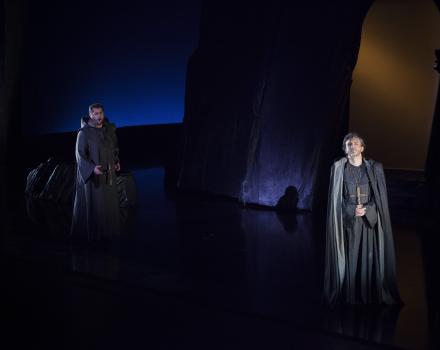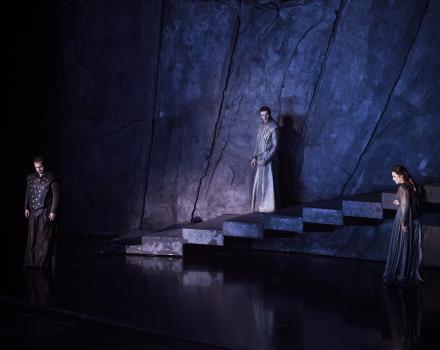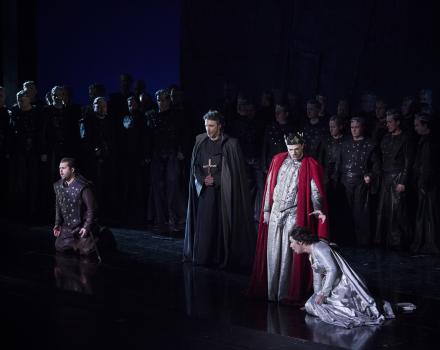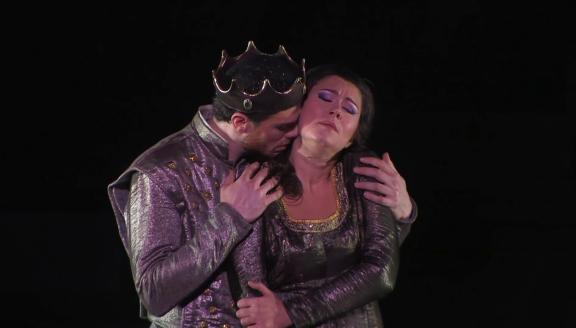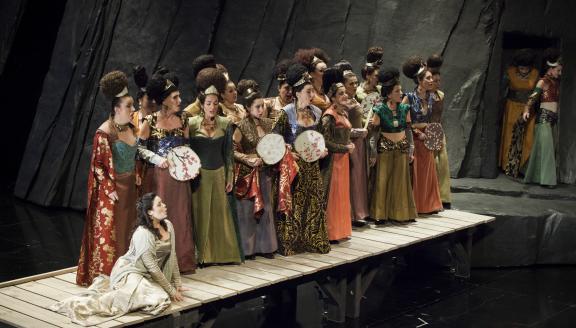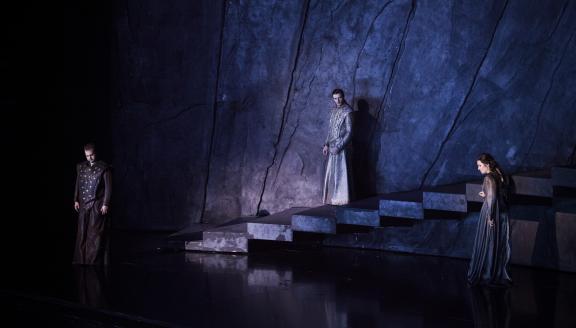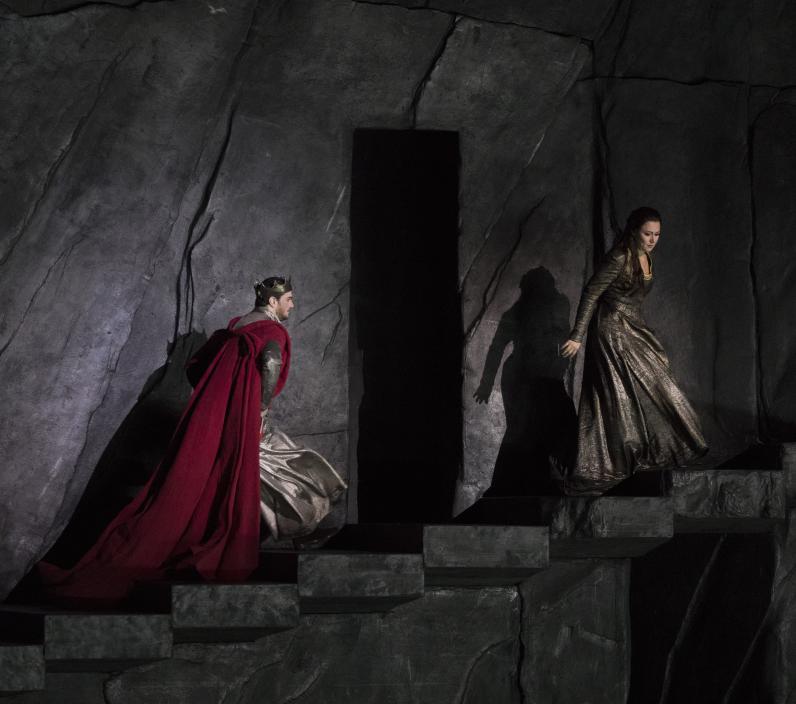

La Favorite
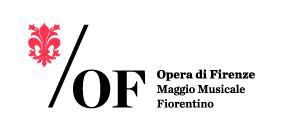
Fabio Luisi conducts this work that mixes the art of French grand opera and Italian belcanto.
Cast
|
Leonor de Guzman
|
Veronica Simeoni
|
|---|---|
|
Fernand
|
Celso Albelo
|
|
Alphonse XI
|
Mattia Olivieri
|
|
Balthazar
|
Ugo Gualiardo
|
|
Ines
|
Francesca Longari
|
|
Don Gaspar
|
Manuel Amati
|
|
Un Seigneur
|
Leonardo Sgroi
|
|
Chorus
|
Maggio Musicale Fiorentino
|
|
Orchestra
|
Maggio Musicale Fiorentino
|
| ... | |
|
Music
|
Gaetano Donizetti
|
|---|---|
|
Conductor
|
Fabio Luisi
|
|
Director
|
Ariel García Valdés
|
|
Lighting
|
Dominique Borrini
|
|
Chorus master
|
Lorenzo Fratini
|
|
Assistant director
|
Derek Gimpel
|
|
Scenes and costumes
|
Jean-Pierre Vergier
|
| ... | |
Video
The story
Act I
In the monastery of Santiago de Compostela. The monks are entering the chapel, followed by the Father Superior Balthazar and the novice Fernand, who is about to take his vows. Balthazar notices that the young man is hesitating and asks the reason. Fernand replies that his faith has been wavering since once in the church, a woman lovely as an angel kneeled to pray beside him. Since then, whenever he prays to God, he sees the woman’s image and dreams of a destiny outside of the monastery walls. In vain, Balthazar tries to dissuade him, refuses to bless him, and predicts that one day he will return repented.
On the beach of the island of Léon. Inès, confidant of Léonor, the favorite of the King, sings and dances with her friends while awaiting the boat that will bring Fernand, who has been blindfolded, ashore. In vain, he asks Inès to reveal the name of her mistress. Léonor arrives and the two exchange words of love, but she refuses to tell him who she is, warning him that he should renounce her to save his honor. Inès announces the arrival of the King of Castile, Alphonse XI. Now Fernand believes he knows she is a lady of high rank while he is just a young stranger.
Act II
In the Alcazar Palace of Seville. Alphonse and his officer Don Gaspar are discussing their great victory in the war against the Moors, in particular the heroic acts of Fernand, whom the King plans to honor before the entire court. But the courtiers are conspiring against Léonor, because Fernand loves her.
Léonor enters and learns from Inès of Fernand’s victories. She expresses to the King her shame and pain for being only his “favorite” although she thought she would become his wife. Alphonse urges her to have patience: she will soon know what her King has planned for her and invites her to participate by his side at the party celebrating the victory. As the ceremony begins, Don Gaspar delivers an anonymous love letter to the King normally addressed to Léonor. The latter confesses that she loves another, without revealing his name. Their conversation is brusquely interrupted by the arrival of Balthazar, the Pope’s messenger, who curses the adulterous couple and threatens to excommunicate the King if he repudiates his Queen for his ‘favorite’. Alphonse refuses to give in, claiming his royal power, while Léonor asks him to revenge her honor.
Act III
In the Alcazar Palace of Seville. Alphonse thanks Fernand for his valor in battle and asks him what he would like as a prize. The young man asks for Léonor’s hand Alphonse is stunned but immediately grants his assent to their marriage, with the dual purpose of taking revenge on Léonor and ending his controversies with the Pope. Fernand, unaware of his beloved’s past is feeling full of joy, while Léonor is filled with anguish: she cannot accept that her betrothed is to be disgraced in the eyes of the court because of her relationship with the King. She instructs Inès to reveal to the young man that she was the King’s lover and that she will understand if he rejects her. However, before Inès can speak to Fernand, she is arrested by Don Gaspar.
The wedding ceremony begins. The King gives Fernand the title of Marquis along with the collar of the noble order. When Léonor arrives, he welcomes her with affectionate words, leading her to believe that he has forgiven her. Fernand invites the court to share his happiness, but they respond with disdain. He rushes at them violently to revenge the offense but is stopped by the sudden arrival of Balthazar who reveals to Fernand that he has married the lover of the King Alphonse. The young man accuses Alphonse of deceiving him, renounces his titles and breaks his sword at the King’s feet. Alphonse considers punishing his insolence but, aware of his own guilt, he renounces his revenge and lets Fernand leave with Balthazar.
Act IV
In the monastery of Santiago de Compostela. Fernand is once again about to take his vows and confides to Balthazar that he has returned to the monastery to find inner peace. Balthazar invites him to turn his thoughts only to God, then leaves him: he must rush to a gravely ill young novice who has just arrived at the monastery. Left alone, Fernand’s thoughts return to Léonor. He prays God to help him forget the past and goes into the chapel to take his vows. Léonor enters disguised as a novice: she is dying and prays God to get Fernand’s forgiveness. But she overhears his voice as he consecrates himself to God, tries to flee but is too weak and collapses to the ground. Fernand exits the church and recognizes her, and first, rejects her. But Léonor defends herself: she thought he knew about her past and accepted to marry her anyway. Fernand feels his love for Léonor reawakening and begs her to leave with him, but she dies in his arms. Balthazar asks the monks to pray for the young novice.
Insights
5 things to know about La Favorite
1° An opera composed in the Parisian period of Donizetti
In 1838, Donizetti's life took a tragic turn with the death of his wife. The same year, his opera Poliuto was censored for political reasons at the Teatro San Carlo in Naples. With nothing to retain him in Naples, he decides to move to Paris where he composes for several theatres and where his Poliuto, renamed Les Martyrs by the librettist Eugène Scribe, is performed at the Opéra de Paris in 1840. It was in this Parisian period that Donizetti wrote his best operas, in French, including La Favorite, in 1840, but also La Fille du Régiment (1840) and Don Pasquale (1843), becoming extremely popular in the French capital.
2° An opera inspired by a variety of sources
As an Italian composer, Donizetti follows, of course, in the footsteps of a Rossini and will have a great influence on Verdi. However, during his first trip to Paris in 1835, he discovered very fashionable French composers such as Meyerbeer or Halévy, and inspiring him want to try his hand at grand French opera. So, following the conventions the opera is set as 4 acts with a ballet. Inspired by the drama Les Amans malheureux ou Le Comte de Comminges by Baculard d'Arnaud, Donizetti's fourth opera in French, La Favorite is really a mix between Italian belcanto and grand French opera. Donizetti demonstrates his mastery of French style to which he subtly adds an Italian touch.
3° From L’ange de Nisida to La Favorite
Before becoming La Favorite, Donizetti's opera might have had a different destiny. Originally entitled L’ange de Nisida, the opera featured not 4 but 3 acts - and was scheduled to be performed at the Théâtre de la Renaissance in Paris. But the theatre closed before it could host Donizetti's opera and forced him to look elsewhere. This set back had its benefits; it decided Donizetti to write a fourth act - arguably the best of the opera - in collaboration with the librettist Eugène Scribe with whom he had already worked. It was on this occasion that the title of the work became La Favorite. Later, in 1842, Donizetti composed an Italian version of the opera that would have various titles such as Leonora di Guzman and Elda.
4° A resounding success
Even though it has a rather average libretto - as it is true of a certain number of operas - La Favorite became a resounding success at the time of its premiere. And this success continues today as the opera is regularly programmed throughout the world. Indeed, La Favorite is undoubtedly, with Lucia di Lamermoor, one of the most accomplished operas of the Italian composer. Between the year of its creation and 1904, at the Opéra de Paris alone, La Favorite had already 650 performances. One of the peculiarities of this opera is that it also brings to the fore a role of a mezzo-soprano.
5° The French version in Fiorentino
La Favorite is the story of the scandalous love of a king for his mistress, of the sincere love between the same favorite and a young man as brave as he is innocent, and whose tragic epilogue sets the passion and redemption against each other. Although located in Italy, the Maggio Musicale Fiorentino has decided to produce the original French version of the work, rather than the smaller Italian version.
Gallery
